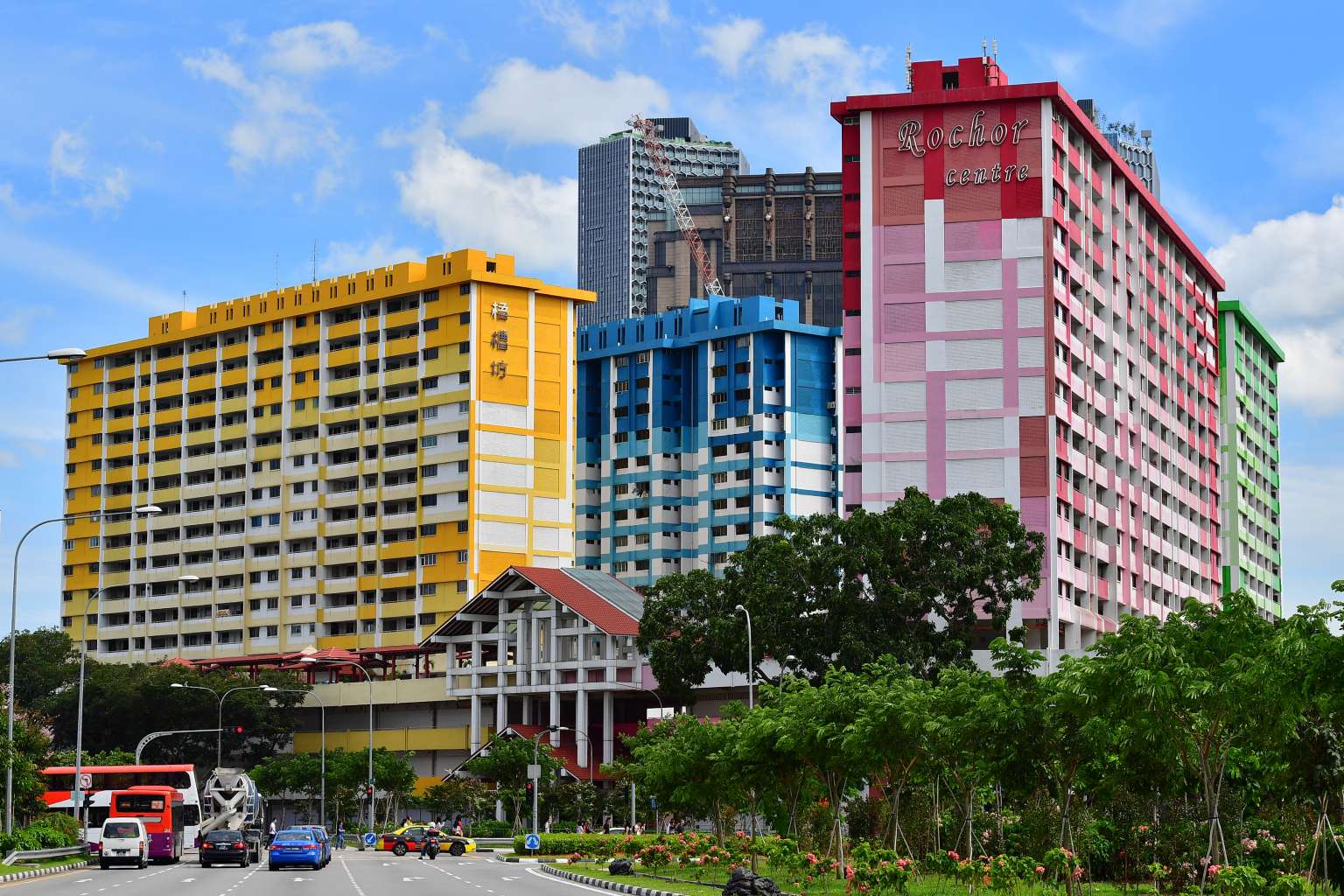Honey wagons and Little Johor: 5 things to know about Rochor Centre before it's torn down
Sign up now: Get ST's newsletters delivered to your inbox

Rochor Centre, with its 567 Housing Board flats in four blocks, as well as 187 shops and eating houses, will have to make way for the southern stretch of the North-South Corridor, which is scheduled to be completed in 2026.
ST PHOTO: LIM YAOHUI
Felicia Choo
Follow topic:
This story was first published on Dec 22, 2016, and updated on June 20, 2018.
SINGAPORE - Rochor Centre, with its 567 Housing Board flats in four blocks, as well as 187 shops and eating houses, will be demolished from June 26.
Demolition is expected to be completed by April 2019.
The iconic public housing estate will have to make way for the southern stretch of the North-South Corridor, which is scheduled to be completed in 2026.
Heritage and photography enthusiasts have been flocking to the estate, which is one of the last vestiges of 1970s' freewheeling Bugis.
Unfortunately, Rochor Centre is not the only iconic public housing estate soon to be relegated to the annals of the history pages. Dakota Crescent and four low-rise HDB blocks in Siglap are following suit in the name of redevelopment.
Here are five things you might not have known about Rochor Centre:
1. IT WASN'T ALWAYS COLOURFUL
The four blocks were originally all-white when they were first built in 1977.
They were repainted in 1994 in their current colours under the Interim Upgrading Programme.
Residents also reaped other benefits, including covered walkways, a jogging track, landscaped gardens, faster lifts, new lift lobbies and games courts - totalling a cool $5.5 million then.
The best part? They didn't have to pay a single cent.
2. IT USED TO SMELL PRETTY BAD... BUT WAS NEAR A TOURIST SPOT
Night soil trucks - also known as honey wagons - had their deposit point located opposite the estate in the 1970s and 1980s.
The point has since been replaced by Albert Complex in the 1980s.
However, the smell did not deter transvestites who frequented the area near Rochor Centre to pose for pictures with tourists when the old Bugis Street closed in 1985.
3. IT WAS A CARPARK PIONEER
Rochor Centre housed the first basement carpark in 1975.
Nearly three decades later in 2003, it became one of the first public carparks - along with one in Toa Payoh Central - to implement an automated charging system using Electronic Road Pricing technology and per-minute charging.
Drivers said goodbye to coupons and inserting their CashCards into readers.
4. IT HAD A COMMUNITY-ORIENTED DESIGN
The 1970s marked a move away from utilitarian HDB designs to those that were more community-oriented, like that of Rochor Centre's.
It was also built in the "podium-and-tower" style, with the four towers sharing a playground on the fourth floor podium, as well as three floors of retail space. Shenton House at Shenton way is another example of the style.
At the start, the estate had been home to 183 shops and 567 households. Devotees who were on their way to nearby temples were frequent shoppers at Rochor Centre for religious goods.
5. IT WAS ONCE KNOWN AS "LITTLE JOHOR"
It earned the nickname for being popular with Malaysians in the 1980s, as they found shopping there cheaper than in their home country.
Rochor Centre is located near the Queen Street bus terminal, where SBS bus service 170 plies routes between Singapore and Johor.
It is also located near Ban San Street Taxi Kiosk, the only place in Singapore where people can get a Malaysia-registered taxi to take them to Malaysia.

